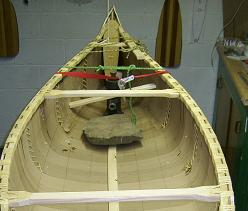
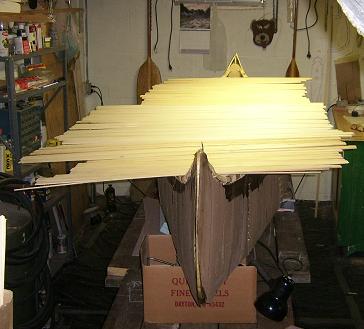
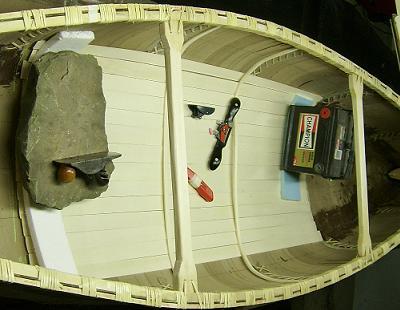
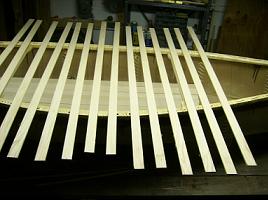
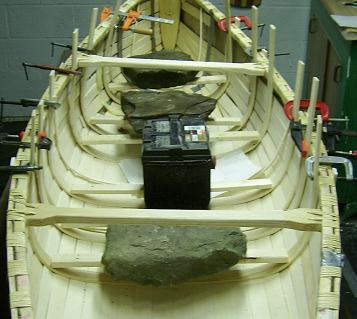

|
REPAIRING THE HULL: The problem of the paper fracturing during bending it up at the stems is being addressed. The hull is flat in the first 2 feet at the stems and the chines are 90 degree bends. It turns out that wetting the paper makes it very pliable. Had I known that I could have wetting the paper during staking it up much like is done with birch bark. To correct the problem I wetted the paper and using weighs and wood strapping reformed the hull in that area. As it was not possible to get the paper to a perfect shape some type of filler was necessary to fill the low areas on the outside of the hull. In these areas a mixture of glue and basswood sawdust was used as a filler. After smoothing the filler down flush with the hull a layer of fiberglass was used (inside and outside the hull) to strength the area along the chines that had previously been sanded thin during staking up the paper and to cover the fillers. |

|

|
| INSTALLING THE SHEATHING: The sheathing is installed while still green. Each piece is trimmed to fit on edge. The sheathing is left in the canoe with the ribs installed until dry. After drying the sheating is sanded and varnished before being returned to the canoe. | |
 |
 |
| INSTALLING THE RIBS: The ribs are installed working from center toward the stems. The ribs have been prebent after being in boiling water. Weights apply pressure to force the ribs into chine areas. After drying in the canoe the ribs are also sanded and varnished before final placement into the canoe. | |
Previous page................